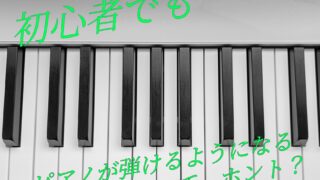TOEFL ibt リーディングテストのスコアを改善するには…
自分も、リーディング問題に苦戦したことがありますが、
一番の対策は、多読をすること。
このシリーズでは、リーディング対策用の設問も合わせて
様々なトピックでリーディング練習が出来るようにしております。
ぜひ、活用して、自身のスコアアップを目指して下さい。
本文
Title: Deciphering the Rosetta Stone: A Key to Ancient Egyptian Hieroglyphs
The Rosetta Stone is one of the most famous artifacts in the history of archaeology and linguistics. This ancient slab of black granite, discovered in 1799 in the Egyptian town of Rosetta, played a pivotal role in unlocking the mysteries of Egyptian hieroglyphs, the intricate script of ancient Egypt.
Discovery of the Rosetta Stone
The discovery of the Rosetta Stone is credited to a French officer named Pierre-François Bouchard, who was part of Napoleon Bonaparte’s expedition to Egypt. In July 1799, while working on the construction of Fort Julien, Bouchard’s troops unearthed the stone, which measures about 114 centimeters in height, 72 centimeters in width, and 28 centimeters in thickness. It bears an inscription in three scripts: Greek, Demotic (a later Egyptian script), and hieroglyphs.
The Importance of Multilingual Inscriptions
The Rosetta Stone’s significance lies in its inscriptions in three scripts. At the time of its discovery, knowledge of hieroglyphs had been lost for over a millennium. Scholars were unable to decipher the ancient script, which was used for monumental inscriptions, religious texts, and official documents in ancient Egypt.
However, the Greek inscription on the Rosetta Stone provided the key. Scholars knew how to read ancient Greek, so having a text in that language alongside hieroglyphs allowed them to begin making comparisons. They realized that the inscriptions were translations of one another, and that the hieroglyphic script represented both phonetic and ideographic elements.
The Work of Jean-François Champollion
The process of deciphering hieroglyphs was a complex and lengthy endeavor, but it ultimately led to one of the most significant breakthroughs in the history of linguistics. French scholar Jean-François Champollion is credited with deciphering the hieroglyphs on the Rosetta Stone and unlocking the door to understanding ancient Egyptian texts.
Champollion’s breakthrough came through a combination of careful analysis and comparisons of the hieroglyphic text with the known Greek text. He was able to identify phonetic elements in hieroglyphs and, crucially, link them to the names of rulers known from other inscriptions. This allowed him to build a comprehensive understanding of the hieroglyphic script.
Legacy and Impact
The decipherment of hieroglyphs revolutionized the study of ancient Egypt. It opened up a treasure trove of information about the culture, history, and daily life of the ancient Egyptians. Researchers gained access to religious texts, administrative documents, and inscriptions on monuments and tombs.
The Rosetta Stone itself became an iconic symbol of linguistic and archaeological achievement. It is now housed in the British Museum in London, where it continues to be a source of inspiration for those interested in the study of ancient civilizations and languages.
設問
- Where was the Rosetta Stone discovered?
A) Alexandria
B) Cairo
C) Rosetta
D) Luxor - What is the Rosetta Stone made of?
A) Limestone
B) Granite
C) Sandstone
D) Marble - Why is the Rosetta Stone significant for the study of hieroglyphs?
A) It contains a unique type of hieroglyph.
B) It provided translations of hieroglyphs into Greek.
C) It is the largest known example of hieroglyphic script.
D) It was inscribed by the famous scholar Champollion. - Who is credited with deciphering the hieroglyphs on the Rosetta Stone?
A) Napoleon Bonaparte
B) Pierre-François Bouchard
C) Jean-François Champollion
D) Julius Caesar - What language was inscribed on the Rosetta Stone alongside hieroglyphs?
A) Demotic
B) Latin
C) Greek
D) Coptic - What was the primary breakthrough that allowed Champollion to decipher hieroglyphs?
A) Discovering a new hieroglyphic character.
B) Identifying phonetic elements in hieroglyphs.
C) Deciphering the entire hieroglyphic text.
D) Comparing hieroglyphs to ancient Hebrew. - What is the Demotic script?
A) A script used in ancient Greece.
B) A later Egyptian script.
C) A form of cuneiform writing.
D) The earliest form of hieroglyphs. - Where is the Rosetta Stone currently housed?
A) The Louvre Museum in Paris
B) The British Museum in London
C) The Egyptian Museum in Cairo
D) The Vatican Library in Rome - What did the decipherment of hieroglyphs reveal about ancient Egypt?
A) Information about Greek rulers in Egypt.
B) The secrets of pyramid construction.
C) Details about daily life, religion, and history.
D) The location of hidden treasures. - What is the symbolic significance of the Rosetta Stone?
A) It represents the lost art of hieroglyphic writing.
B) It symbolizes Napoleon Bonaparte’s conquest of Egypt.
C) It represents the unification of ancient scripts.
D) It is a symbol of linguistic and archaeological achievement.
解答・解説
- Where was the Rosetta Stone discovered?
Correct Answer: C) Rosetta (ロゼッタ)
Explanation (説明): ロゼッタ石の発見地はエジプトのロゼッタです。この場所で石が発見されました。 - What is the Rosetta Stone made of?
Correct Answer: B) Granite (花崗岩)
Explanation (説明): ロゼッタ石は黒い花崗岩でできています。この質問はロゼッタ石の材質に関するものです。 - Why is the Rosetta Stone significant for the study of hieroglyphs?
Correct Answer: B) It provided translations of hieroglyphs into Greek. (それはヒエログリフをギリシャ語に翻訳したものです。)
Explanation (説明): ロゼッタ石は、ヒエログリフをギリシャ語に翻訳したテキストを含んでおり、ヒエログリフの解読に重要な情報を提供しました。 - Who is credited with deciphering the hieroglyphs on the Rosetta Stone?
Correct Answer: C) Jean-François Champollion (ジャン=フランソワ・シャンポリオン)
Explanation (説明): ロゼッタ石のヒエログリフを解読したのは、ジャン=フランソワ・シャンポリオンとされています。 - What language was inscribed on the Rosetta Stone alongside hieroglyphs?
Correct Answer: C) Greek (ギリシャ語)
Explanation (説明): ロゼッタ石には、ヒエログリフと並んでギリシャ語の碑文が刻まれていました。 - What was the primary breakthrough that allowed Champollion to decipher hieroglyphs?
Correct Answer: B) Identifying phonetic elements in hieroglyphs. (ヒエログリフにおける音素的要素を特定したこと。)
Explanation (説明): シャンポリオンがヒエログリフを解読するための主要なブレイクスルーは、ヒエログリフにおける音素的要素を特定したことです。 - What is the Demotic script?
Correct Answer: B) A later Egyptian script. (後期のエジプトの文字。)
Explanation (説明): デモティック文字は後期のエジプトの文字スクリプトで、ロゼッタ石にも刻まれていました。 - Where is the Rosetta Stone currently housed?
Correct Answer: B) The British Museum in London (ロンドンのブリティッシュ・ミュージアム)
Explanation (説明): ロゼッタ石は現在、ロンドンのブリティッシュ・ミュージアムに所蔵されています。 - What did the decipherment of hieroglyphs reveal about ancient Egypt?
Correct Answer: C) Details about daily life, religion, and history. (日常生活、宗教、歴史の詳細。)
Explanation (説明): ヒエログリフの解読により、古代エジプトに関する日常生活、宗教、歴史に関する詳細な情報が明らかになりました。 - What is the symbolic significance of the Rosetta Stone?
Correct Answer: D) It is a symbol of linguistic and archaeological achievement. (それは言語学的および考古学的な成就の象徴です。)
Explanation (説明): ロゼッタ石は言語学と考古学の偉業の象徴とされています。
本文の日本語訳
Title: ロゼッタストーンの解読:古代エジプトのヒエログリフの鍵
ロゼッタストーンは、考古学と言語学の歴史における最も有名な遺物の一つです。この古代の黒い花崗岩の板は、エジプトの町ロゼッタで1799年に発見され、古代エジプトの入り組んだ文字であるヒエログリフの謎を解くうえで重要な役割を果たしました。
ロゼッタストーンの発見
ロゼッタストーンの発見は、フランスの将校ピエール=フランソワ・ブシャールに帰せられています。彼はナポレオン・ボナパルトのエジプト遠征隊の一員であり、1799年7月、フォート・ジュリアンの建設中に、この石を発掘しました。この石は高さ約114センチ、幅72センチ、厚さ28センチで、ギリシャ語、デモティック(後期のエジプト文字)、ヒエログリフの3つの文字で記されています。
多言語の碑文の重要性
ロゼッタストーンの重要性は、3つの文字での碑文にあります。発見当時、ヒエログリフの知識は千年以上にわたり失われていました。学者たちは古代エジプトの記念碑の碑文、宗教文書、公文書に使用された古代の文字を解読することができませんでした。
しかし、ロゼッタストーンのギリシャ語の碑文が鍵を提供しました。学者たちは古代ギリシャ語を読む方法を知っていたため、ヒエログリフと並んでその言語のテキストがあることで、比較を始めることができました。彼らは碑文が互いに翻訳であること、そしてヒエログリフの文字が音素的要素と表意的要素の両方を表していることを理解しました。
ジャン=フランソワ・シャンポリオンの仕事
ヒエログリフの解読プロセスは複雑で長い努力でしたが、最終的には言語学の歴史における最も重要なブレイクスルーの一つにつながりました。フランスの学者ジャン=フランソワ・シャンポリオンは、ロゼッタストーンのヒエログリフを解読し、古代エジプトのテキストを理解する扉を開けた功績を持っています。
シャンポリオンのブレイクスルーは、ヒエログリフのテキストを注意深く分析し比較することの組み合わせによってもたらされました。彼はヒエログリフの音素的要素を特定し、重要なことに、それらを他の碑文から知られている君主の名前に関連付けることができました。これにより、彼はヒエログリフの文字の包括的な理解を構築することができました。
遺産と影響
ヒエログリフの解読は古代エジプトの研究を革命的に変えました。研究者たちは、宗教的なテキスト、行政文書、および記念碑と墓に刻まれた碑文にアクセスできました。これにより、古代エジプトの文化、歴史、日常生活に関する情報の宝庫が開かれました。
ロゼッタストーン自体は、言語学と考古学の偉業の象徴となりました。現在はロンドンのブリティッシュ・ミュージアムに所蔵されており、古代文明と言語の研究に興味を持つ人々にとって、今でもインスピレーションの源です。
次の問題
[広告]
確かな英語力は、日々の継続から。
その継続を後押しする、第二言語習得理論に基づいた
オンライン英語学習プログラムがあります。
英語を使う人のための、確実なスキルアップが望める
7日間の無料体験はこちらから!

TOEFL ibt ライティング対策も、
あるテクノロジーを活用すれば、一発解決!
自分1人でも、ライティングは対策出来る時代に。
英会話を始めてみたいけれど、どのサービスが良いか分からない…
そんな方は、まず、この記事で3つのサービスを比べてみてはいかがでしょうか?
英語力を効率良く伸ばすことができるサービス3選です。





-320x180.jpg)
-320x180.jpg)
-320x180.jpg)
-320x180.jpg)

-320x180.jpg)
-320x180.jpg)



コメント